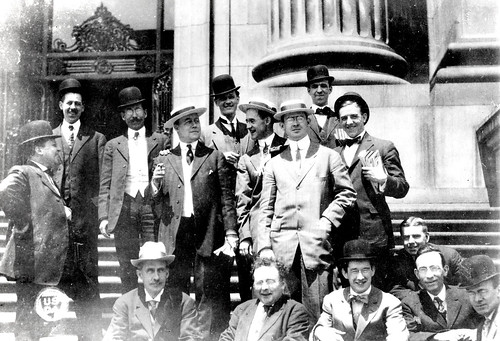 AN OVERVIEW
AN OVERVIEWUS law has regulated food production since the 1800s, along with food additives and drugs since the early 1900s. The Federal Food, Drug, and Cosmetic Act of 1938 (“FD&C Act”) was the first modern comprehensive regulatory regime, and created the FDA to administer and enforce these laws. Today FDA regulates over $1 trillion worth of food, drug, device and other product sales in the US. In addition, FDA also regulates products made in America for distribution and sale overseas, as well as overseas manufacturing for sale in the domestic market. FDA has the power to conduct inspections and enforce the laws it administers (Title 21 of the US Code).
HISTORICAL HIGHLIGHTS
Much of early Food and Drug law was passed in response to tragic accidents. Today’s laws are more proactive, keeping products off the market until proven safe, and giving FDA broad powers of enforcement and lots of expertise to keep unsafe product off the market and away from consumers.
- 1862: President Lincoln appointed first director of Department of Agriculture (regulating among other things, crops, poultry, & livestock). Interestingly, President Lincoln was a user of a drug commonly prescribed at the time for melancholy, but which contained Mercury at levels 8x higher than the modern safe maximum. Many historians believe Lincoln may have suffered from Mercury poisoning for much of his adult life.
- 1906: Food and Drugs Act passed, marking the first set of federal laws creating minimum safety and purity standards for food and drugs. Leading up to this legislation, the Department of Agriculture and other Federal entities had been conducting laboratory research to evaluate the safety and efficacy of food and drugs on the market, and finding a significant lack of safety standards. Then in 1905, Upton Sinclair published his famous novel The Jungle, building popular support for the passage of strong legislation.
 |
| An early photo of the initial group of FDA inspectors, taken in 1909. |
- 1938: 107 (primarily) children died due to ingestion of a product marketed as an elixir but that contained high concentrations of toxic chemicals.
- 1940s: Another toxic drug resulted in over 300 deaths and injuries and the FD&C Act was amended to include stricter quality controls for manufacturers. Also, the Department of Health and Human Services established an integrated approach to promote national health initiatives
 |
| Charles W. Crawford sworn in as FDA Commissioner in 1951. |
- 1960s: GMPs became law, and FDA had its strongest-yet inspection and enforcement powers over manufacturers. Also, a defective medical device caused 700 deaths, resulting in several years of Congressional hearings and eventually adding medical devices to the scope of FDA regulatory authority.
TOP FDA PRIORITIES
Today FDA regulates virtually every kind of food, drug, and medical device including topical products such as cosmetics, and recently, tobacco. FDA’s scope is not exhaustive, however, as it does not regulate some notable areas such as alcohol, livestock, meat and poultry, nor other areas relating to health such as food stores, pharmacies and health insurance. FDA does not regulate advertising, but does regulate product labeling.
- Safety. Products must be safe, and generally must be proven safe before they can be sold.
- Efficacy. Products must be effective for their stated purpose.
- Availability. FDA also works with industry to promote large healthcare projects like the annual flu vaccine (in cooperation with the Centers for Disease Control) and encourages widespread availability of even small-volume products (e.g., vaccines deemed critical to public health may be given special “orphan” status to encourage a single-source producer to continue manufacturing).
MAJOR FDA ENFORCEMENT ACTIONS
FDA proceeds in its enforcement capacity by generally surveying the industry through inspections and other means, and generally provides warnings first before any more serious penalties.
- Denial of License. Most products require pre-approval prior to commercial marketing. Any changes to a process, product, or product indication may require a new or modified license.
- Once Licensed:
o Observation Reports (“483”). Documents a violation observed during an inspection. A big part of the inspection will typically be the procedures maintained by the facility–the burden is on the manufacturer to prove they are operating within a “state of control”.
o Warning Letter. Documents a failure to remediate violations observed in a 483.
o Consent Decree, Product Seizures, Recalls or other Serious Action. Rare, but very serious action for dangerously defective products. Again, FDA has broad powers to keep product off the market, and, with proper evidence, may seize and take possession of any “adulterated” product, and even seize entire facilities to halt production.
o Civil or Judicial Action. In the most extreme cases, FDA may sue individuals or companies in civil court, or bring criminal charges.
Understanding FDA’s priorities and enforcement regime is a crucial foundation for drug and device business or anyone under the scope of FDA regulatory authority. FDA inspectors and enforcement personnel understand the history of the organization that justifies its current proactive posture. While letter-of-the-law compliance with the numerous Title 21 regulations is essential, regulated businesses would do well to not lose sight of the forest for all those trees: consumer safety should be a shared priority of government and the private sector alike.
© Coda Corp USA 2012. All rights reserved.

 NAVIGATION
NAVIGATION
